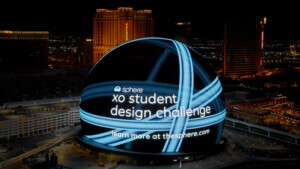A few months ago, I visited Las Vegas for the fourth time. Not much has changed: It is still a battleground of corporate brands vying for attention. Do you want to buy a Prada bag in Venice, see a concert from hologram Michael Jackson, or try one of Taco Bell’s new Cantina Margaritas? Architecture supports this function by playing a different role than normal: Rather than being an end in itself, it serves to allure, capture, and contain its subjects—and, in turn separate them from their dollars—by turning public space into a stage. In Vegas, workers are the background dancers, and you are the star of the show.
Perched high above the murky moat in my castle at The Excalibur Hotel and sporting a fresh cup of coffee and a laptop opened to various digital metaverses, my eyes glanced from the screen to the pulsing lights of the Strip below. I blinked constantly, resetting my vision, while scanning between the two worlds. The words of a sage friend Walaid Sehwail echoed in my head from a conversation we had while I was researching a prior article for AN. To paraphrase: “The driving force of a metaverse isn’t really about new forms of communication, or NFT art, or immersive space, it’s really about brand experiences.” It’s not that the best use of a metaverse was to realize brand experiences, rather that’s the bulk of the capital interest in the metaverse.

Behold! A year later, the only whispers I hear about the metaverse are the lone waning cry of a months-old Facebook ad by UPS that somehow frothed into my algorithmic spume. “Come visit a UPS store in the metaverse!” the sponsored content exclaims. The post—by a corporation ranked #34 on the Fortune 500 list—has a whopping eight likes and 11 comments. I expand the comments section with childlike glee, hoping to find a number of folk who share my grumbly confusion for the whole gamble. “How do I get to the upper floors?” says one commenter. (You can’t.)
Las Vegas is the metaverse IRL (in real life). It’s an island of brands, images, shapes, and alluring signs pointing in the direction of debauchery and distraction. It’s vibes. Oh, and gambling. Lot’s of gambling. In a metaverse, you can change the avatar you inhabit by changing the “skin,” which usually entails pulling up a menu and swapping clothes. You can be a businessman, a velociraptor, or a broccoli. (These upgrades sometimes come with a price tag.) But in Las Vegas, you change your skin by walking from one narrative space to another. In The Excalibur I am a death-or-glory knight mustering my courage for an upcoming tournament; but when I cross the street to the New York, New York Hotel and Casino, I become a hardened city slicker, eating a slice of pizza and slapping the hood of a Yellow Cab while puffing out my chest and screaming “I’m walkin’ here!” In both cases, you can’t be anything you want—you can only be that which someone has packaged and sold to you as a possible identity with the express purpose of chasing a follow-up sale.
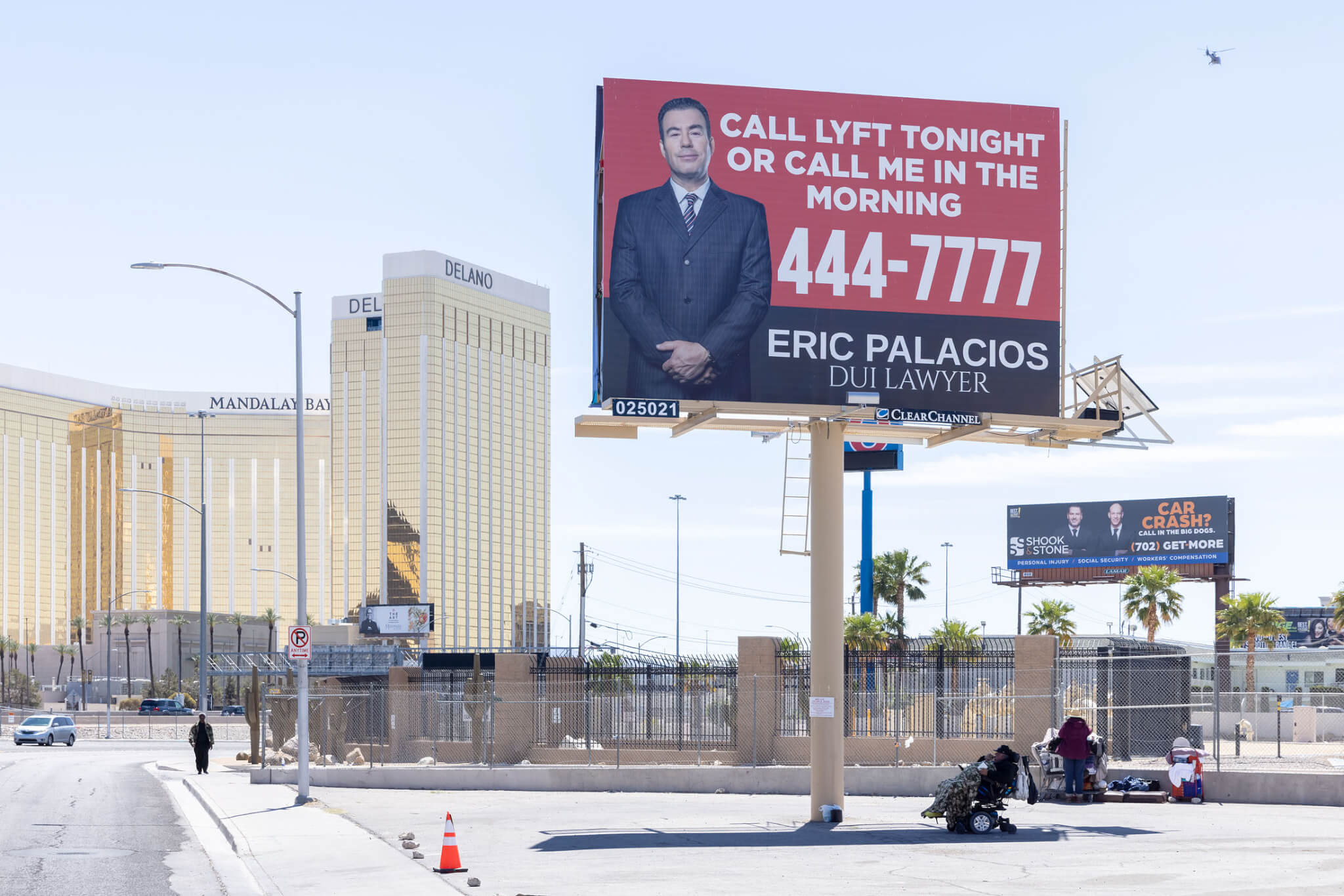
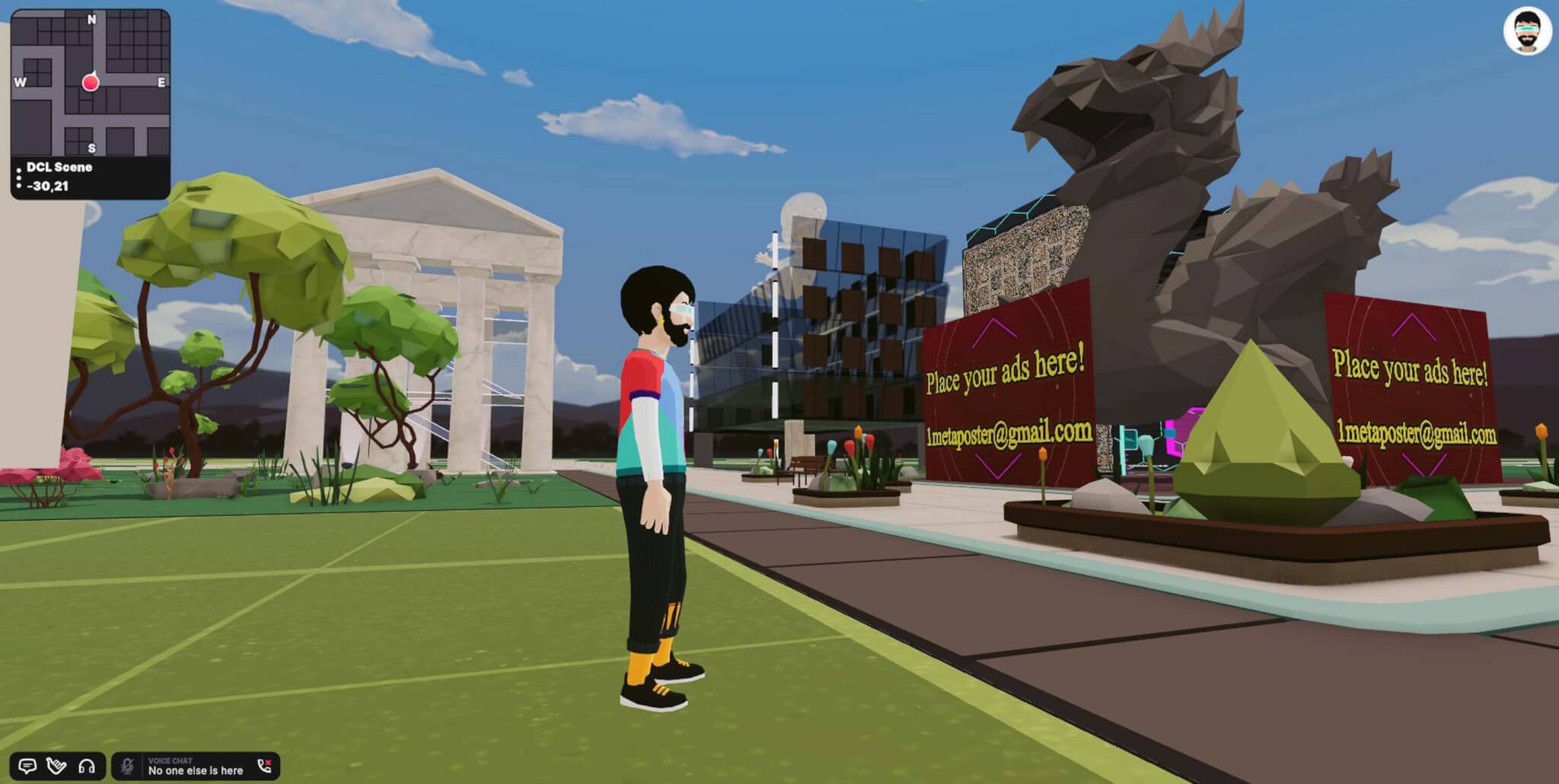
The year 2022 marks the 50th anniversary of Denise Scott Brown, Robert Venturi, and Steven Izenour’s opus Learning from Las Vegas, a study comparing the city of sin to Rome. Through mapping the city of Las Vegas and comparing it with the famed Nolli Map, the book sheds light on public space and its signified presentation as the essence of the built environment. They also discovered a chasm between the so-called “cultured” and the architecture of the profane. The book advised that learning from literally everything—and thus rejecting or restructuring what is deemed “canonical”—is a revolutionary way to be an architect. That rift has repeated itself with the emergence of digital immersive architectures.
To commemorate this anniversary, various institutions have authored updated studies. The Neon Museum produced “Duck Duck Shed”, a series of conversations and talks on the city today. And this fall, Iwan Baan exhibited a series of photographs of the two cities together at the American Academy in Rome, where he is the Richard Grubman and Caroline Mortimer Photographer in Residence. (A selection of these images were published in the October/November issue of AN.) Three photographs from this exhibition illustrate what we can learn from Vegas once we accept it as the metaverse IRL.
First, consider this photograph of an obnoxious billboard near the Strip and compare it to the similarly annoying billboards in the Decentraland metaverse. The pairing captures both worlds displaying an excessive barrage of signage. The blank surfaces beckon viewers to buy into the pyramid scheme of the place and, in turn, add to itself, like an insatiable beast. Just like real-world real estate commodities, digital assets are only as valuable as the amount of interest in surrounding similar assets. The draw explains why there are many developments which seek to replicate Vegas vibes, but the simulations only have to be good enough to turn a profit, not replicate an authentic place: See Reno, Nevada; Windsor, Canada; or Biloxi, Mississippi. Similarly, there are many who don’t believe in crypto independently but have thrown in their Bitcoin with the hope that as others join the returns roll in, setting up rippled marketplaces of other currencies: Dogecoin, SHIB, other “meme coins,” as examples.
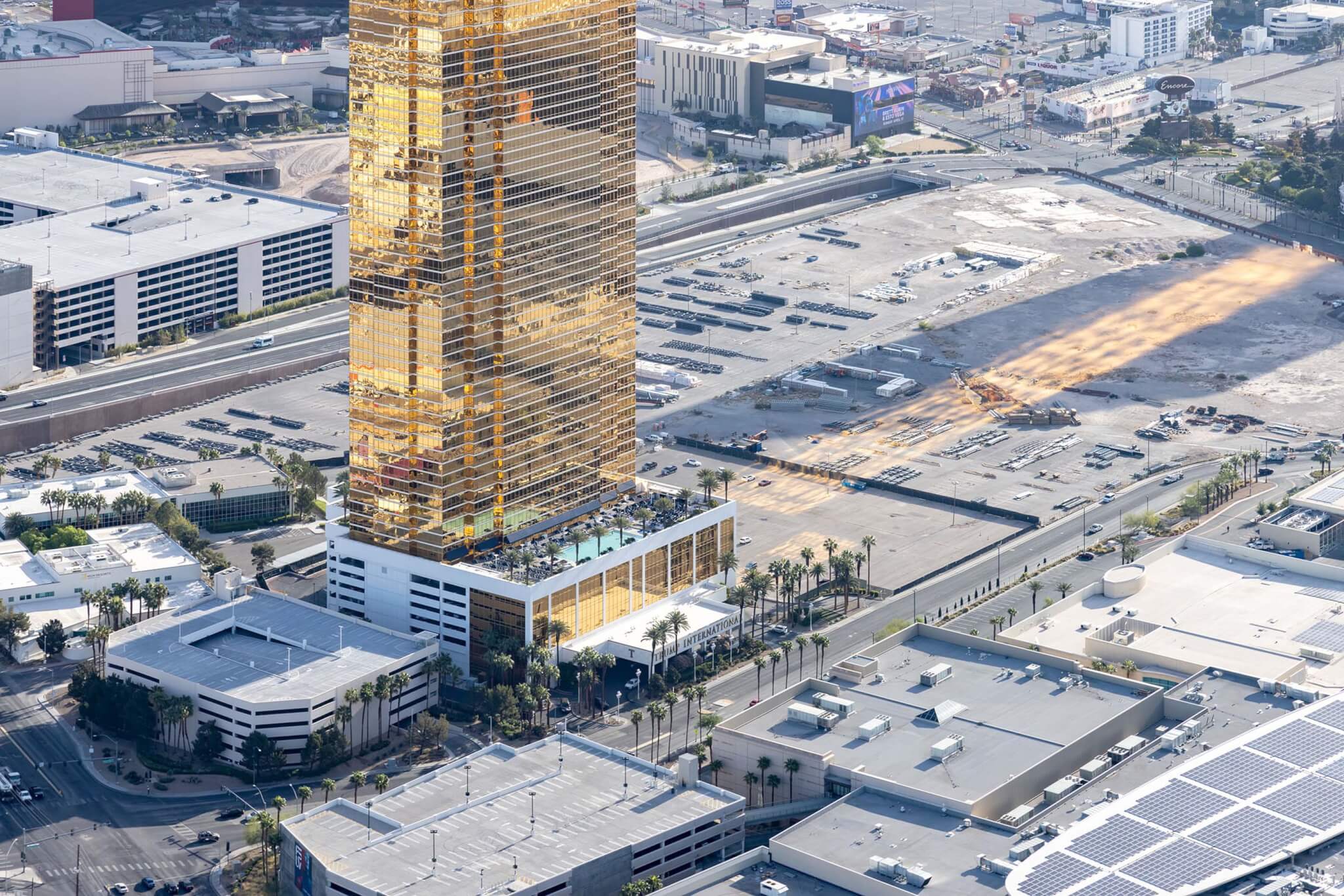
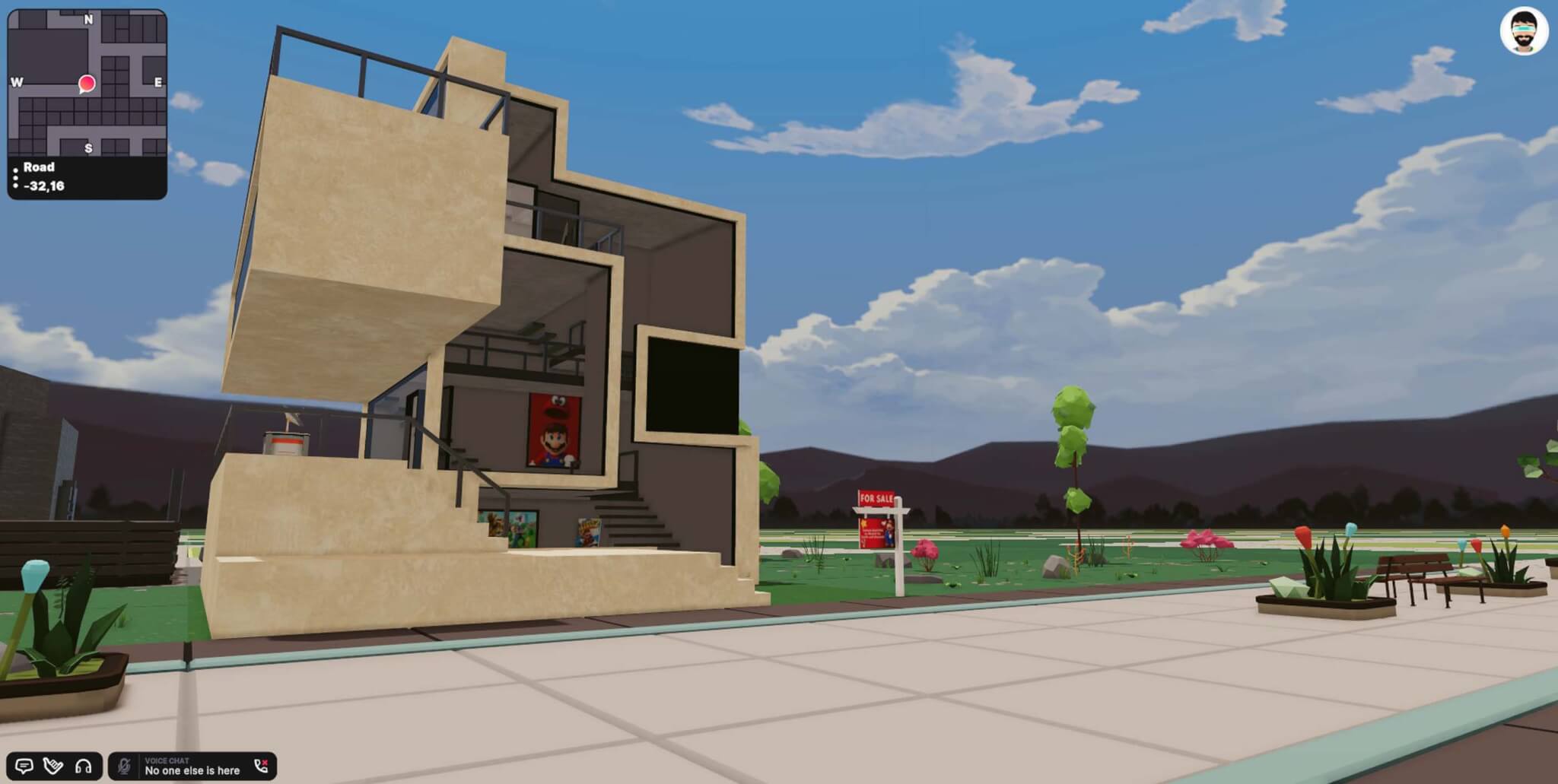
Next, a photograph of the Trump Hotel in a sea of developable plots set against a single “home” and surrounding empty LAND for sale in Decentraland. The availability of so much land, and the exorbitant costs associated with developing it, price out average people or users. It’s like encountering a paywall in the construction of your own world. The visibility of those plots crush the narrative; it breaks the stage, revealing the establishment of a shared realm is not the purpose but, instead, walling off those who have the means to construct.
Then, lastly, consider the sublime loneliness that sets in when one exits the Strip. This photograph shows a pedestrian traversing the space between a parking garage and a highway with the Mandalay Bay Hotel in the distance. Vegas alone and sober is, well, sobering. One time I stepped off the main drag and was swallowed by the sudden banality of an empty hotel ballroom, only to later become the sole occupant of a bathroom with 37-foot-high ceilings facing a wall of 37 open urinals. In a metaverse space, one might encounter a well-developed object or building sitting right next to huge swaths of owned but undeveloped LAND. With limited build distances in some engines, the view of emptiness goes all the way to the horizon which is hilariously filled by a backdrop of hills that can’t be hiked. In both cases the hypeful architecture loses its luster when viewed from the wobegon wilds that surround it.
According to a description of the work, Baan’s exhibition “looks at Las Vegas—and its spectacle of improbable buildings and infrastructure—to rethink Rome, a city shaped by power and money for centuries.” These are not neutral images, much like Scott Brown’s own photography of the city was made with similar intentions. Baan’s views, the text continues, “taken expressly for this occasion, force us to question if we can regard architecture without moral judgment, a perspective Venturi encouraged for Las Vegas, in the ecological and social contexts of the twenty-first century.”
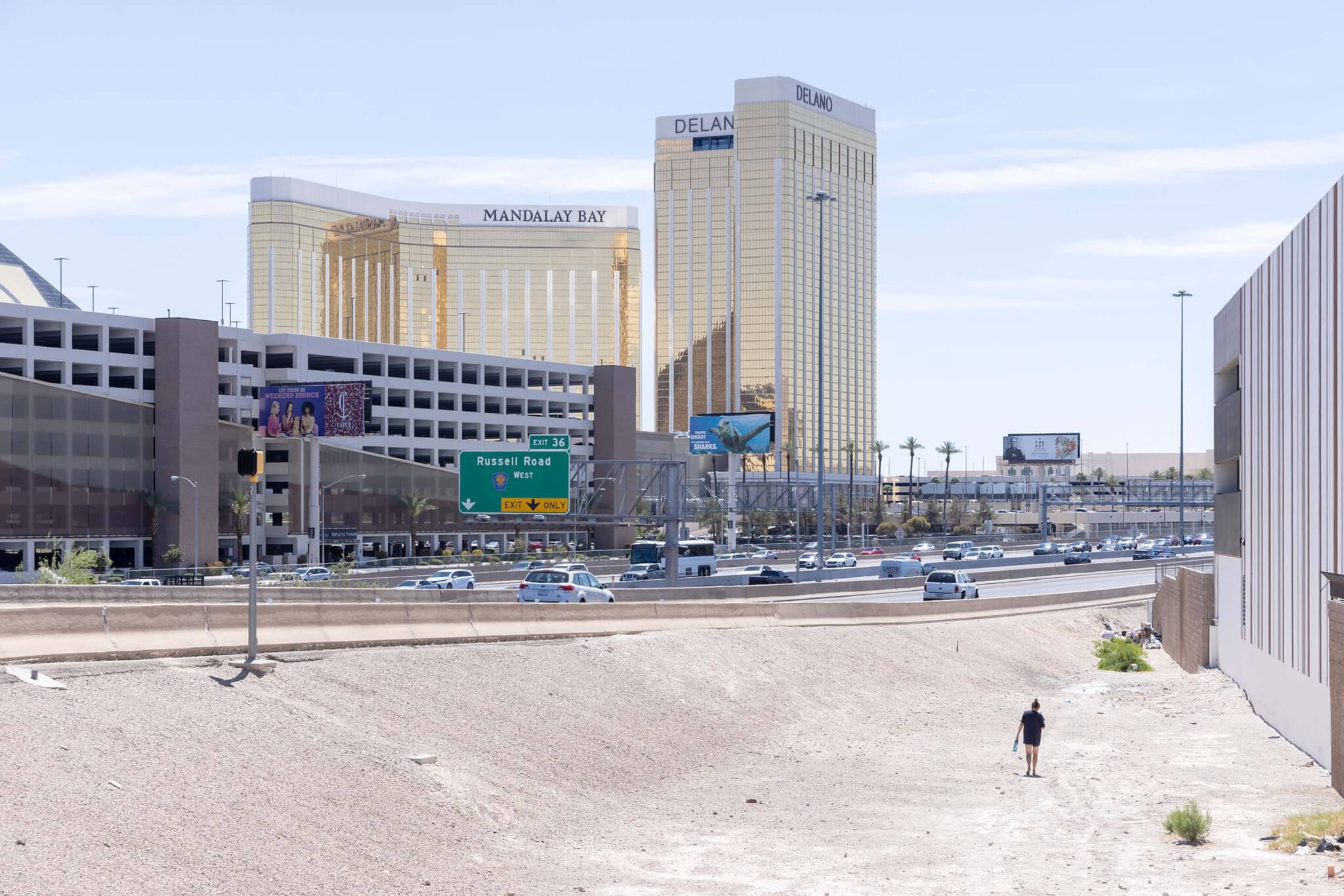
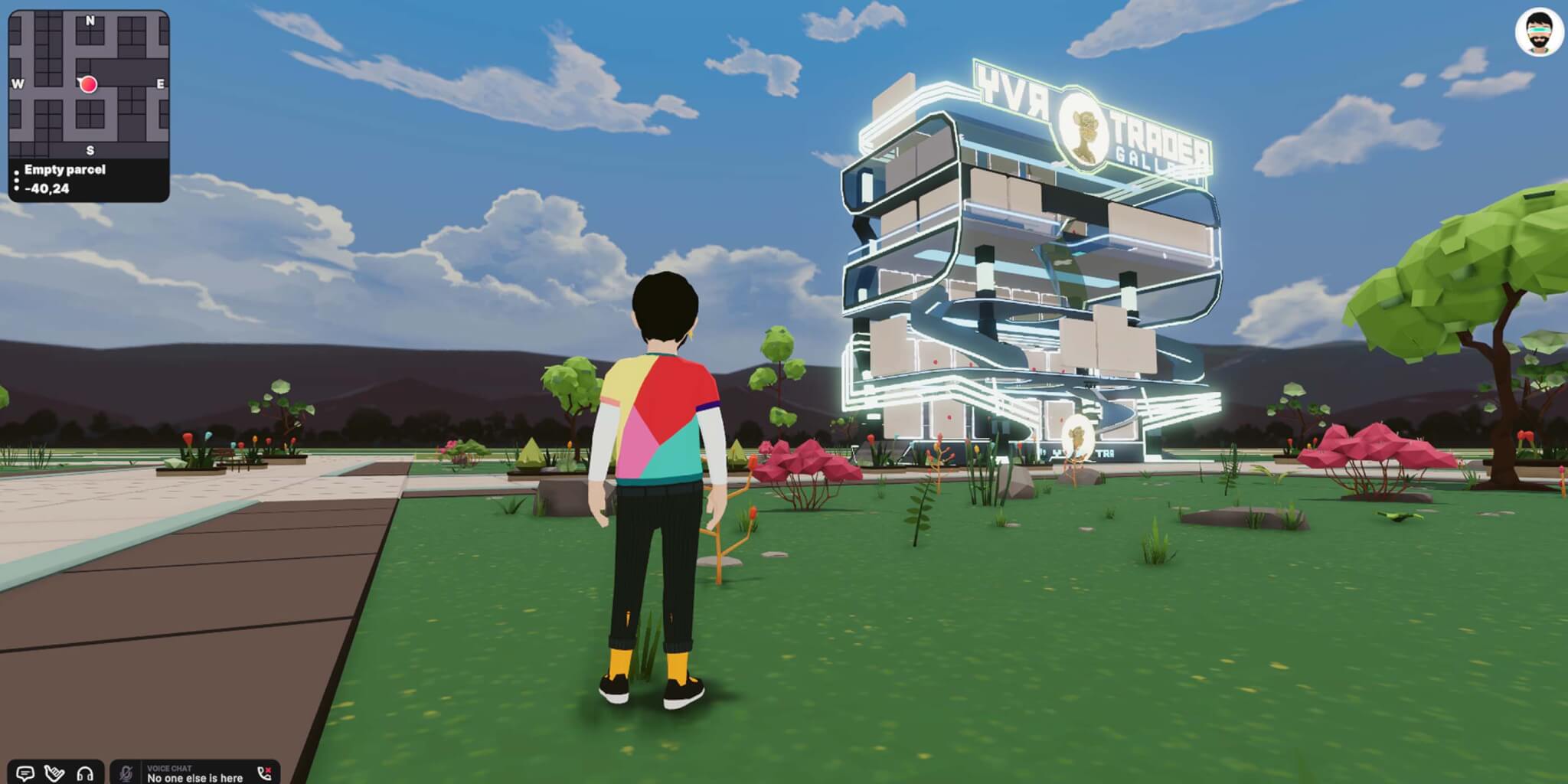
We have the same problem with metaverse architectures today. But now, it’s further complicated by how much has come into question about actual architecture—its ethics and labor practices are not such staunch bastions of morality as we thought. Venturi and Scott Brown are correct in that it is radical to look at everything, in the sense that it shows us the root conditions of spatial production. Of course, we shouldn’t look with the intention to riff on kitschy content for new trendy design ideas, but with the ambition to distribute architectural thought widely enough that it becomes a multifaceted force for design quality and justice. This, time after time, exposes the pre-existing boundaries of the discipline as purely stylistic in nature and classist in its judgments.
The same is true for the metaverse: Those who refuse to take it seriously run the risk of ignoring the harsh reality of economic production today. And as for how the metaverse might relate back to Rome, well, that’s a story for another day.
Ryan Scavnicky is the founder of Extra Office, a design practice which engages developments in contemporary media to uncover new channels for architectural content. He currently teaches architecture design, theory, and criticism at Kent State University.










